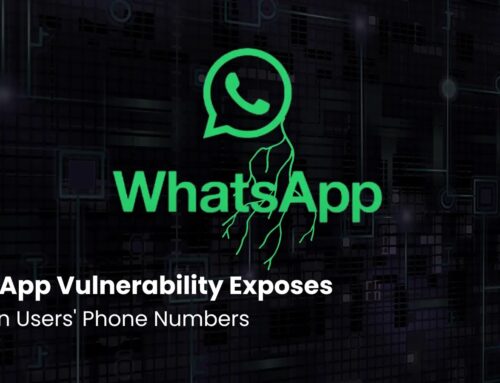
WhatsApp Screen-Sharing Scam Let Attackers Trick Users into Revealing Sensitive Data
The Deceptive Lure of WhatsApp Screen Sharing: A Global Scam Unpacked
In an increasingly interconnected world, instant messaging platforms have become indispensable for personal and professional communication. However, this convenience often comes with amplified risks, as threat actors relentlessly seek new avenues for exploitation. A highly sophisticated and rapidly spreading scam is currently exploiting WhatsApp’s screen-sharing feature, introduced in 2023, to trick users into inadvertently divulging highly sensitive financial and personal data. This tactic, observed across the UK, India, Hong Kong, and Brazil, underscores a critical new threat vector demanding immediate user awareness and robust defense strategies.
How the WhatsApp Screen-Sharing Scam Operates
The core of this scam lies in social engineering, leveraging human trust and the perceived legitimacy of a familiar application. Attackers initiate contact, often posing as technical support, bank representatives, or government officials. Their objective is to convince the target to activate WhatsApp’s screen-sharing function. Once screen sharing is enabled, the scammer guides the victim through a series of actions, typically under the guise of “troubleshooting” or “verification.”
- Initial Contact: Scammers often use convincing pretexts, such as suspicious account activity alerts, tax rebates, or urgent banking issues, to create a sense of urgency and panic.
- Request for Screen Sharing: The scammer then instructs the user to share their screen, claiming it’s necessary to resolve the fictitious problem. They might say, “To help you, we need to see what’s happening on your phone.”
- Eliciting Sensitive Information: With screen sharing active, the attacker can observe everything displayed on the user’s phone. They might then instruct the user to open banking apps, government portals, or email accounts, ostensibly to “confirm details” or “verify identity.” As the victim navigates these applications, the scammer records or memorizes login credentials, financial information, and other personal data.
- Remote Control Deception (Implied): While WhatsApp screen sharing itself doesn’t grant remote control, the scammer’s verbal instructions and the user’s compliance effectively mimic a remote access scenario, leading the victim to expose confidential information themselves.
Global Reach: A Widespread and Evolving Threat
The reported incidents from diverse geographical regions like the United Kingdom, India, Hong Kong, and Brazil highlight the scam’s international prevalence and adaptability. This global reach indicates a well-organized and sophisticated operation, likely employing multiple language speakers and localized social engineering tactics. As more users adopt WhatsApp’s newer features, the attack surface expands, making vigilance paramount worldwide.
Remediation Actions and User Safeguards
Protecting yourself and your organization from the WhatsApp screen-sharing scam requires a combination of technical prudence and heightened skepticism. Prevention is primarily behavioral, reinforcing the principle that legitimate entities will almost never ask for sensitive data via screen sharing or unofficial channels.
- Never Share Your Screen with Unknowns: Treat screen sharing with the same caution as sharing your physical ID or bank card. Legitimate support personnel will not request you to share your screen on WhatsApp for sensitive operations. If in doubt, terminate the call/chat and contact the organization through official channels (e.g., the number on their official website or the back of your bank card).
- Verify Identity Independently: If someone claiming to be from your bank, a government agency, or tech support contacts you, do not trust the caller ID or the message itself. Hang up and call them back using the official number listed on their website or on your financial statements.
- Educate Yourself and Others: Awareness is your strongest defense. Inform family, friends, and colleagues about this scam. The more people who understand the tactics, the fewer victims there will be.
- Review WhatsApp Permissions: Regularly check and understand the permissions granted to your applications. While screen sharing is an active choice, being aware of all app permissions is a good security practice.
- Enable Multi-Factor Authentication (MFA): For all critical accounts (banking, email, social media), enable MFA. Even if a scammer obtains your password, MFA can provide an additional layer of security.
- Keep WhatsApp and Your OS Updated: Ensure your WhatsApp application and your device’s operating system are always running the latest versions. Updates often include critical security patches.
Tools for Awareness and Reporting
While this scam is primarily social engineering, certain tools and resources can aid in awareness, reporting, and general cybersecurity hygiene.
| Tool Name | Purpose | Link |
|---|---|---|
| National Cyber Security Centre (NCSC) | Reporting scams and general cybersecurity guidance (UK specific) | https://www.ncsc.gov.uk/collection/phishing-scams |
| Indian Cyber Crime Coordination Centre (I4C) | Reporting cybercrime and receiving alerts (India specific) | https://cybercrime.gov.in/ |
| Hong Kong Police Force Cyber Security and Technology Crime Bureau | Reporting and information on technology crime (Hong Kong specific) | https://www.police.gov.hk/ppp_en/04_crime_matters/ctcb/ |
| WhatsApp Security & Privacy Resources | Official information on security features and reporting unwanted messages | https://www.whatsapp.com/safety/security |
Heightened Vigilance: The Only True Defense
The WhatsApp screen-sharing scam exemplifies how seemingly innocuous features can be weaponized through cunning social engineering. The rapid proliferation and global reach of this threat underscore the critical need for continuous user education and skepticism. Remember, no legitimate institution will ever ask you to share your screen on a messaging app to resolve a security issue or verify sensitive information. Maintaining a healthy level of suspicion and verifying requests via official, independent channels remains the most effective defense against sophisticated phishing and social engineering attacks.





